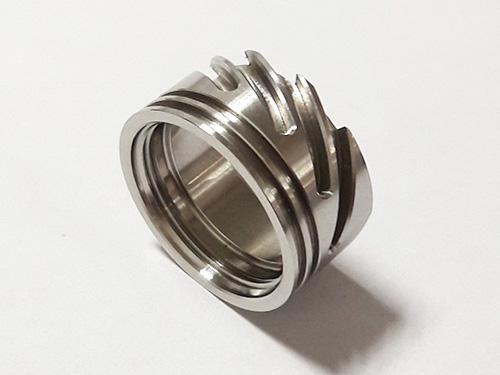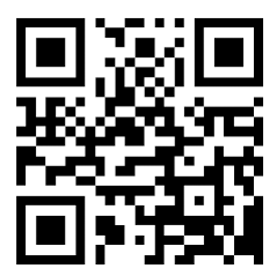

NC machining parts

When conducting process analysis, CNC programmers should use the machine manual, programming manual, cutting quantity table, standard tools, fixture manual and other materials, select appropriate machine tools according to the material, contour shape and machining accuracy of the workpiece to be machined, formulate the machining scheme, and determine the machining sequence of parts, tools, fixtures and cutting parameters used in each process. In addition, programmers should constantly summarize and accumulate practical experience in process analysis and write high-quality NC machining programs
I. reasonable selection of machine tools
there are generally two situations when using NC machine tools to process NC machined parts. One case: if there are part drawings and blanks, select the CNC machine tool suitable for processing the part. Another situation: there is already a CNC machine tool, so it is necessary to select the parts suitable for processing on the machine tool. In either case, the main factors to be considered are the material and type of blank, the complexity of part contour shape, size, machining accuracy, number of parts, heat treatment requirements, etc. To sum up, there are three points: ① protect the technical requirements of processed parts and process qualified products. ② It is conducive to improving productivity. ③ Minimize production costs (processing costs)
II. Process analysis of NC machining parts
NC machining process analysis covers a wide range. Here, it is only analyzed from the possibility and convenience of NC machining
(I) the dimension data on the part drawing shall be given in accordance with the principle of convenient programming
1. The dimension marking method on the part drawing shall adapt to the characteristics of NC machining. On the NC machining part drawing, the dimension shall be quoted with the same benchmark or the coordinate dimension shall be given directly. This marking method is not only convenient for programming, but also convenient for mutual coordination between dimensions, and brings great convenience in maintaining the consistency of design basis, process basis, detection basis and programming origin setting. Because the part designers generally pay more attention to the use characteristics such as assembly in dimensioning, they have to adopt the local and partial marking method, which will bring a lot of inconvenience to the process arrangement and NC machining. Due to the high accuracy of NC machining and repeated positioning, the use characteristics will not be damaged due to large accumulated errors. Therefore, the local decentralized marking method can be changed to the marking method of the same datum injection size or directly giving the coordinate size
2. The conditions of the geometric elements constituting the part contour shall be sufficient
the coordinates of the base point or node shall be calculated during manual programming. In automatic programming, all geometric elements constituting the part contour shall be defined. Therefore, when analyzing the part drawing, it is necessary to analyze whether the given conditions of geometric elements are sufficient. For example, circular arc and straight line, circular arc and circular arc are tangent in the drawing, but according to the dimensions given in the drawing, when calculating the tangent conditions, they become intersected or separated. Due to the insufficient conditions of geometric elements of parts, it is impossible to start programming. In case of this situation, it shall be solved through consultation with the part designer
(II) the structural manufacturability of each processing part of the part shall comply with the characteristics of NC processing
1) the inner cavity and shape of the part shall adopt unified geometric type and size. This can reduce the tool specification and the number of tool changes, make the programming convenient and improve the production efficiency
The fillet radius of the groove should not be too small, so the fillet radius of the groove should not be too small. The manufacturability of parts is related to the height of the machined contour and the radius of the transition arc3) when milling the bottom plane of the part, the fillet radius r of the groove bottom shall not be too large
4) unified datum positioning shall be adopted. In NC machining, if there is no unified datum positioning, the contour position and size of the two machined surfaces will be inconsistent due to the reinstallation of the workpiece. Therefore, in order to avoid the above problems and protect the accuracy of its relative position after two clamping processes, a unified datum positioning should be adopted
good parts have appropriate holes as positioning reference holes. If not, set process holes as positioning reference holes (such as adding process lugs on the blank or setting process holes on the allowance to be milled in subsequent processes). If the process hole cannot be made, at least the finished surface should be used as a unified benchmark to reduce the error caused by two clamping
in addition, analyze whether the machining accuracy and dimensional tolerance required by the parts can be protected, whether there are redundant dimensions that cause contradictions or closed dimensions that affect the process arrangement
III. selection of machining method and determination of machining scheme
(I) selection of machining method
the selection principle of machining method is to protect the machining accuracy and surface roughness of the machined surface. Since there are generally many processing methods to obtain the accuracy and surface roughness of the same main products, the actual selection should be considered in combination with the shape, size and heat treatment requirements of the parts. For example, for holes with it7 accuracy, boring, reaming, grinding and other processing methods can meet the accuracy requirements, but the holes on the box are generally bored or reamed, rather than grinding. Generally, reaming is selected for small-size box holes, and boring shall be selected when the hole diameter is large. In addition, the requirements of productivity and economy, as well as the actual situation of the production equipment of the factory shall also be considered. For the economic machining accuracy and surface roughness of common machining methods, please refer to the relevant process manual
(II) the principle of determining the processing scheme
the processing of more detailed surfaces on parts is often achieved gradually through rough processing, semi finishing and finishing. For these surfaces, it is not enough to only select the corresponding final processing method according to the quality requirements, but also correctly determine the processing scheme from blank to final forming
when determining the processing scheme, the processing method required to meet these requirements shall be preliminarily determined according to the accuracy and surface roughness requirements of the main surfaces. For example, for it7 precision holes with small aperture, when the final machining method is fine reaming, drilling, reaming and rough reaming are usually carried out before fine reaming
IV. division of processes and steps
(I) division of processes
when machining parts with NC lathe, the processes can be relatively concentrated, and most or all processes can be completed as far as possible in one clamping. First, according to the part drawing, consider whether the processed part can complete the processing of the whole part on one CNC machine tool. If not, decide which part of the part is processed on the CNC machine tool and which part is processed on other machine tools, that is, divide the processing procedures of the parts. The general process division has the following ways: (2) division of work steps. The division of work steps is mainly considered from the two aspects of machining accuracy and efficiency. In a process, it is often necessary to use different cutting tools and cutting parameters to process different surfaces. In order to facilitate the analysis and description of more complex processes, the process is subdivided into work steps. The following takes the machining center as an example to illustrate the principle of work step division:
1) the same surface is completed in turn according to rough machining, semi finish machining and finish machining, or all machined surfaces are processed separately according to rough machining before finish machining
2) for parts with both milling surface and boring hole, milling surface first and then boring hole. By dividing the work steps according to this method, the accuracy of the hole can be improved. Because the cutting force is large during milling, the workpiece is easy to deform. Milling the surface first and then boring, so that it can recover for a period of time, so as to reduce the impact on the accuracy of the hole caused by deformation
3) divide the work steps according to the tool. In some machine tools, the rotation time of the worktable is shorter than the tool change time. Work steps can be divided according to the tool to reduce the number of tool changes and improve the machining efficiency
in short, the division of processes and steps should be comprehensively considered according to the structural characteristics and technical requirements of specific parts
v. installation of parts and selection of fixtures
(I) basic principles of positioning installation
1) strive to unify the benchmark of design, process and programming calculation
2) reduce the clamping times as much as possible, and process all the surfaces to be processed after one positioning clamping as much as possible
3) avoid using manual adjustment processing scheme to give full play to the efficiency of NC machine tools
(II) basic principle of selecting fixture
the characteristics of NC machining put forward two basic requirements for the fixture: first, the coordinate direction of the fixture should be relatively fixed with that of the machine tool; The second is to coordinate the dimensional relationship between parts and machine tool coordinate system. In addition, the following four points should be considered:
1) when the processing batch of parts is small, combined fixtures, adjustable fixtures and other general fixtures should be used as much as possible to shorten the production preparation time and save the production cost
2) only one-to-one fixture is considered in batch production, and the structure is simple
3) the loading and unloading of parts shall be convenient to shorten the pause time of the machine tool
4) all parts and components on the fixture shall not hinder the machining of all surfaces of parts by the machine tool, that is, the fixture shall be open, and its positioning and clamping mechanism elements shall not affect the tool walking in machining (such as collision, etc.)


Address:Dashujin Industrial Zone Chengbei, Nanpi County, Hebei Province
Sales Hotline:
Manager Zhang:13643282675
Manager Zhang:15231667166
Email:rjwjzz@163.com

- Runjie Hardware -

Copyright © 2021 Nanpi Runjie Hardware Manufacturing Co., Ltd
冀ICP备15027893号-1
